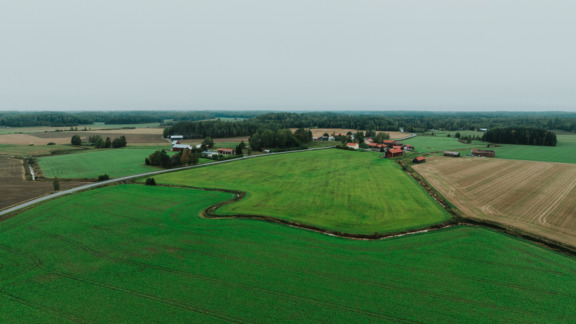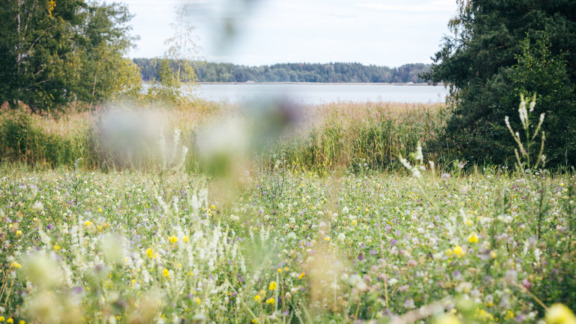Webinar: Closing the gap – how can the private sector boost investment in the environment through agriculture
Regenerative farming could be the cornerstone of food system sustainability, and the market sector could boost environmentally sustainable agriculture with the help of advanced data management and data sharing for scaling market incentives. These were the conclusions of the discussions in the webinar held by BSAG on November 22, 2021, as part of the Waterdrive Interreg-project.
Society expects farmers to deliver, not only good quality, nutritious food at affordable prices, but also clean air, clean waters, and flourishing landscapes. Up the value chain, their clients, food, and retail companies are responding to the climate targets and consumer expectations with sustainability strategies that seek to steer production onto a sustainable path.
“To address these challenges limited public funding should be complemented with private market funding. We need to increase investment in environmental measures in agriculture and support farmers in the transition to more sustainable and resilient production and land management” says Kaj Granholm, Project Manager at BSAG.
Green investment is already mainstream, and banks and insurance companies are assessing the climate risk of their assets and insurance schemes. There are examples of lending and insurance schemes featuring positive incentives, premia for measures with positive environment or biodiversity outcomes. In the food sector, several companies are expanding sustainable, or regenerative, farming practices and paying farmers price premia for following a certain suite of practice.
“These are welcome developments but meeting society’s demands requires more” Granholm adds.
In the webinar dialogue, Nestlé’s Nordic Sustainability Manager Ulla Luhtasela, farmer Jari Eerola and farmer-consultant Lukasz Czech shared their respective approaches and insights on how the market sector could be harnessed to boost environmentally sustainable agriculture. Other participants represented a variety of stakeholders: research, education, finance, banking, insurance, and government authority.
The text continues below.
Regenerative food systems and farm data
Two different topics could be discerned throughout the discussions in the webinar. Firstly, the stakeholders, both the food industry and farmers, advocate that regenerative farming practices (or the agro-ecological transition, as it is sometimes referred to analogously in the European discussion) could be the aim and foundation of food system sustainability.
These practices, aiming to minimize soil disturbance and external chemical inputs and maximize the biological potential, are at the core of Nestlé’s climate strategy in the Nordic region. It makes sense because 70% of the GHG emissions in the company’s value chain come from sourcing. Nestlé targets, by 2050, is to produce 50% of their main ingredients with regenerative agriculture.
Also, farmer Jari Eerola, who produces barley for the Koskenkorva Climate Action Vodka, has set an example of how an entire farm can be transformed in adherence to these practices. His experience from the past two seasons is that regenerative crop farming makes it possible to sustain profit margins − despite extreme weather and the increase in fertilizer prices that damaged the economy of so many of his peers.
Secondly, the leverage and incentives from the market cannot be developed and scaled without advanced data management and data sharing. Accessible, transparent, and comparable data on farm-level attributes, connected with environmental and climatic attributes increase trust among, for example, consumers and taxpayers. Data also enables the development of indexes, standards, and mechanisms for the different market sectors (food chain, retail, finance, insurance, capital market).
In addition, the same data systems can help farmers optimize the choice of crops and crop rotations as well as environmental management, as Lukasz Czech pointed out. One of the central questions still unresolved concerning data is its ownership. When asked, the farmers’ position is clear. It should be the farmer who has the primary right to the data collected on their farm. A point quite adamantly stated by Eerola.
The topic and approaches are still at their inception stage, but through dialogue such as this, the solutions will start to shape out. As Luhtasela summarized it, there is only one way to work on this – together.



